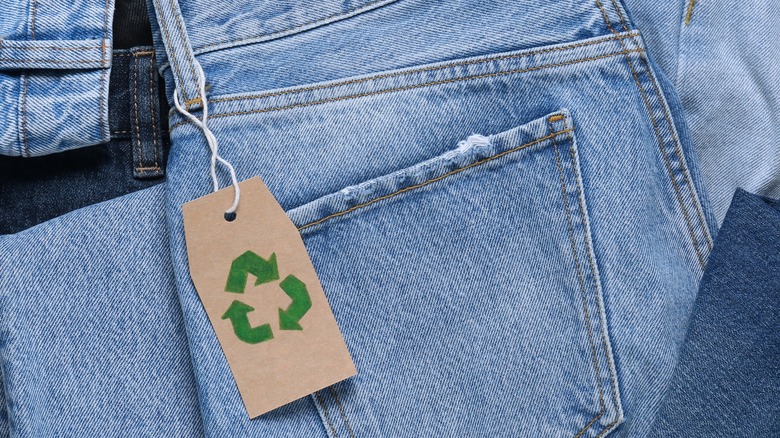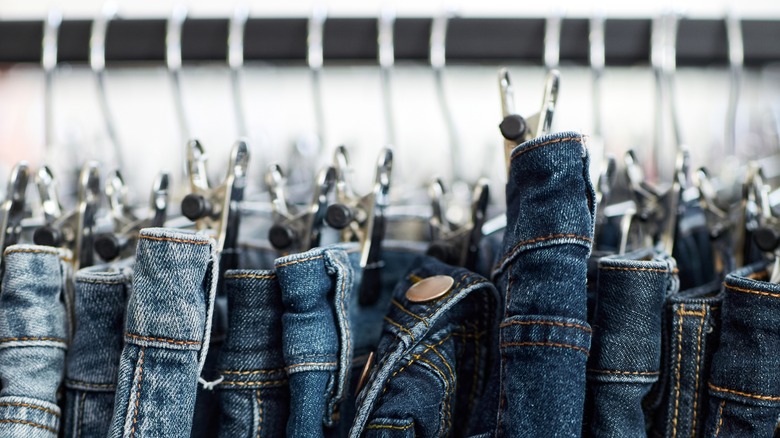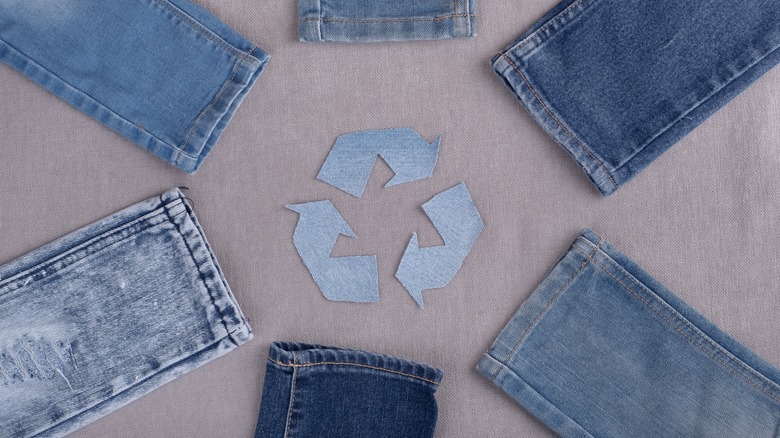What Does It Really Mean When Denim Is Sustainable?
Sustainability is becoming an important issue for many brands, including in the fashion world. With so many definitions of what "sustainability" is, many of them depending on the context in which the term is used, it can be difficult to know what that means for you and your clothes. Is a garment made from recycled materials? Are there fewer carbon emissions involved in its production? Is "sustainable" just another buzzword being used by marketing departments to make consumers feel better about their purchases?
When it comes to fashion, in particular, one of the options that has become more common is sustainable denim. Before you buy a product labeled as having been made from "sustainable denim," though, it's important to know the facts. In this piece, we've dug into what sustainable denim is, how it differs from other denim garments you already own, and what to look for in a sustainable denim brand.
There is no single definition of sustainable denim
First, we hate to be the bearer of bad news, but there's no single definition of what constitutes sustainable denim (not yet, at least). There is no organization that certifies denim brands as "sustainable" based on specific criteria, so this means that you, as the consumer, are the one responsible for investigating whether or not a brand is "sustainable" to you. If that sounds confusing, it is. Forbes notes that this is part of a practice known as "greenwashing," which is essentially the practice of making products seem better for the environment than they actually are.
Despite the prevalence of greenwashing, it seems that many with the power to make changes in the world of denim are working to follow more sustainable models. For example, CottonWorks — which is operated by Cotton Incorporated — is aware of consumers' desires for more sustainable denim options, and it describes how manufacturers are using different techniques that avoid the use of potentially harmful products such as bleach. This might not be the perfect solution, of course, but it's better than nothing.
Know what to look for in sustainable denim
If there isn't any real definition of what "sustainable denim" is, what are you supposed to do if you're someone who wants to buy denim sustainably? The short answer here is that you should do the best you can. While there are some brands that are making more sustainable denim than others, some people have argued that there is no sustainable denim at all. Corey Page Spencer, co-founder of AMENDI, told The Zoe Report, for instance, "No matter anyone's good intentions, none of the products made inside of the global fashion market, including denim, are truly sustainable. In denim, sustainability requires three major dimensions to be in balance with each other — social, environmental, and economical — but on a global scale, none of these dimensions are currently in balance."
Though the global outlook for sustainable denim might not be great, there are many brands that are working to change what they can to improve the situation. In an article on the subject, Boyish founder Jordan Nodarse provided some suggestions to consumers to PureWow, saying, "Look for how much true transparency the company has on their website. Do they have a sustainability report? Do they publish certifications and transaction receipts for the sustainable products and materials they make or purchase? Are they using harmful plastic-based fibers such as polyamide, polyester, polyurethane or acrylic? Do they have transparency into where their fibers are being made (not the mill or factory, but the fiber itself)?"
Discard your denim sustainably
In addition to buying your denim more sustainably, the ways in which you discard your denim can be made more sustainable too. Per Green America, it turns out that your discarded clothes might not be going where you think they are despite your best intentions. Even if you've donated them to a local charity, Green America writes, your pre-owned clothes could end up being incinerated or tossed in a landfill without your knowledge.
One possible alternative, depending on where you buy your denim, is that many brands have developed buyback or recycling programs for their products. (For example, Forbes writes that Madewell has joined forces with resale site ThredUP in its initiative.) If you're looking for these programs, you can often find them online or ask about them in stores.
If you're more creative, you could also try upcycling your old denim garments into something new. This way, you can continue to wear your favorite pair of jeans or denim jacket, even if they don't fit you like they used to.



